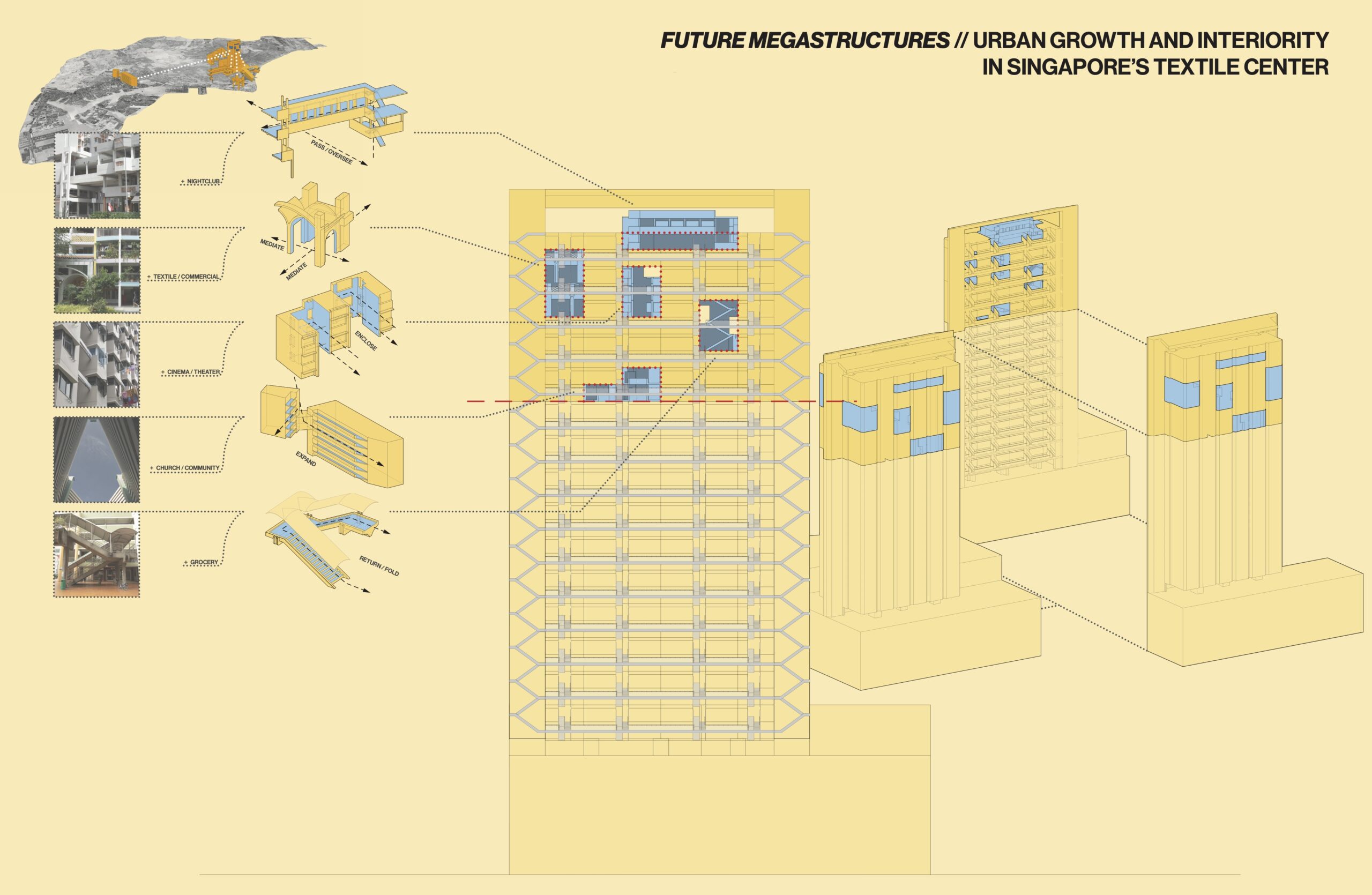Future Megastructures: Urban Growth and Interiority in Singapore

Patrick Rutan
School of Architecture
Singapore, a major port city sited in the Southeast Asian archipelago, has undergone intense urban development in the past half-century. Its rapid experimentation with hyper-dense urban planning schemes have accommodated tremendous increases in population, yet it now finds itself struggling to densify further under the looming shadow of climate change. Singapore necessarily grows inwards and upwards, constrained by its small size and archipelago-island geography; consequently, aging structures are regularly demolished to make way for taller, more efficient urban forms.
Often targets for such demolitions are mixed-use megaprojects – architectural remnants of Singapore’s efforts to define itself as a modern, future-looking nation during the twentieth century. These projects were not only daring in form, but also in their infrastructural capacities for hosting public services, public transportation corridors, civic centers, and other venues for public life. In many cases, these experiments created both formal and informal public spaces around which diverse communities – Singaporean, migrant, expatriate – coalesced and found purchase in the modernizing city-state. After the destruction of some iconic projects, growing activist groups in Singapore have called for the gazetting of this architectural heritage, with some success in encouraging preservation via development incentives. However, the threat of demolition remains, as even well-used buildings are being forfeited for financial benefit – by property owners and inhabitants alike.
Future Megastructures: Urban Growth and Interiority in Singapore searches for a new urban growth model that is adaptive to increasingly dynamic climate conditions and population densities. Over the last half century, Singapore has experimented with hyper-dense urban planning schemes to accommodate such phenomena; today its geographically constrained growth inwards and upwards serves as a highly relevant model for how such efficient density can be balanced with the city’s public livability. Beginning with photo documentation of public space and urban interiority in Singapore, this project aims to catalog and analyze the porosity and interiority within Singapore’s aging megastructures, from which emergent spatial ideas will be applied and tested in the design proposal for an addition to an existing residential structure in Singapore.
These emergent design methods will be applied in a proposal for an addition to an aging high-rise residential building/tower/complex in Singapore. The proposal will grapple with questions of density and form, the reconfiguration of urban spatial orders, adaptive reuse and climate adaptation, building and cultural preservation, urban mobility, and the politics of public space– ultimately working towards a future-resilient postcolonial, postmodern, indigenously informed architecture.